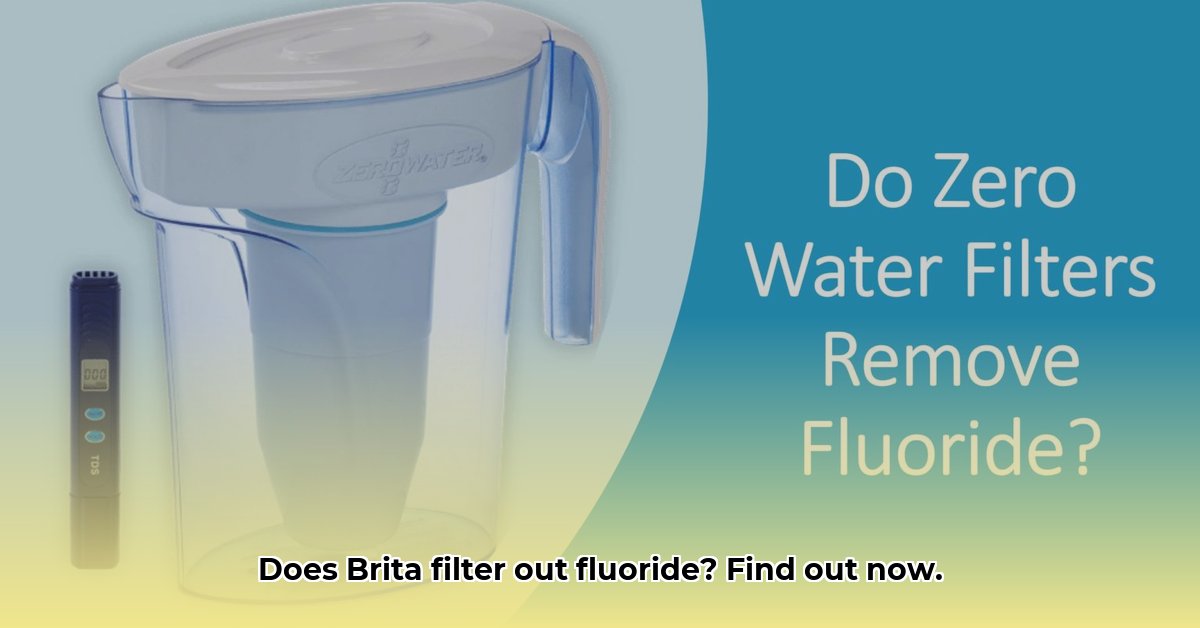Brita filters are popular for improving water taste and clarity, but do they remove fluoride? The short answer is no. While Brita filters effectively reduce chlorine and sediment, they don’t target fluoride. This article explains why and guides you through choosing the right fluoride removal solution for your needs.
Why Brita Filters Miss the Mark on Fluoride
Brita filters primarily use activated carbon, a porous material that acts like a sponge, trapping larger contaminants like chlorine and sediment. Think of it like a net that catches large fish but lets smaller ones slip through. Fluoride ions are so tiny they pass right through the activated carbon’s pores. Other components of Brita filters, like the non-woven layer, aren’t designed for fluoride removal either.
Effective Fluoride Removal Methods: A Comparison
If you’re looking to reduce fluoride in your drinking water, several effective methods are available:
- Reverse Osmosis (RO): This method forces water through a semipermeable membrane, acting as a microscopic sieve. RO systems are highly effective, removing up to 99% of fluoride and other contaminants. However, they can be more expensive upfront, require more maintenance, and produce some wastewater. Example RO System.
- Distillation: This process mimics the natural water cycle. Water is boiled, creating steam that leaves contaminants behind. The steam is then condensed back into pure water. Distillation is very effective at removing fluoride but can be slower and consume more energy. Example Distiller.
- Anion Exchange: This specialized method uses resins that attract and bind to negatively charged ions like fluoride. While effective for fluoride, anion exchange may not remove other contaminants as comprehensively as RO. Example Anion Exchange System. Specialized systems like Clearly Filtered and Berkey also utilize a combination of filter media, including anion exchange resins, to achieve significant fluoride reduction. Clearly Filtered | Berkey (Always verify current specifications on manufacturers’ websites.)
Comparing Fluoride Filtration Systems:
| Feature | Reverse Osmosis | Distillation | Anion Exchange | Clearly Filtered | Berkey |
|---|---|---|---|---|---|
| Fluoride Removal | Up to 99% | High | High | High | Up to 99.75% |
| Other Contaminant Removal | High | Moderate | Moderate | High | High |
| Cost | High | Moderate | Moderate | Moderate | Moderate |
| Maintenance | Moderate | Low | High | Moderate | Low |
| Speed | Slow | Slow | Moderate | Moderate | Moderate |
| Waste Water | Yes | No | No | No | No |
| Installation | Under-sink or countertop | Countertop | Faucet or under-sink | Countertop | Countertop |
Choosing the Right Fluoride Filter: A Buyer’s Guide
Selecting the right fluoride filter depends on your individual needs and priorities:
- Budget: Consider both the initial investment and the ongoing costs of filter replacements.
- Household Size and Water Usage: A larger family may benefit from a higher-capacity system like RO.
- Installation and Space: RO systems may require plumbing modifications. Pitchers and gravity systems are easier to install.
- Maintenance: Distillation typically requires less maintenance than RO or anion exchange.
- Desired Level of Fluoride Reduction: Research the effectiveness of different systems and choose one that meets your specific goals.
Fluoride and Health: Finding the Balance
While fluoride is beneficial for dental health in appropriate amounts, excessive intake may pose health risks. The optimal level is often considered around 0.7 milligrams per liter. Some research suggests potential negative effects from higher levels, though this remains an area of ongoing study. [Source: CDC – Community Water Fluoridation]
Testing your water is crucial for determining your current fluoride levels and making informed decisions about filtration. Home test kits are available, or you can contact your local water supplier for testing.
Filter Maintenance and Environmental Considerations
Remember that filters require regular maintenance and replacement. Always follow the manufacturer’s instructions. Consider the environmental impact of different filtration methods. RO systems produce wastewater, while other filters generate waste that requires proper disposal.
Conclusion: Beyond Brita for Fluoride Removal
Brita filters are not designed for fluoride removal. If reducing fluoride is your goal, explore alternatives like reverse osmosis, distillation, or anion exchange. By weighing the pros and cons of each method and testing your water, you can choose the best solution for your health and household needs. Remember, ongoing research may lead to new and improved filtration methods. Stay informed and choose what aligns best with your priorities.
- Doctor Work Life Balance: Proven Strategies for Physician Well-being - November 20, 2025
- Find Your Work-Life Harmony: Quotes for a Fulfilling Life - November 18, 2025
- CRNA Work-Life Balance: Strategies for a Healthier Lifestyle - November 16, 2025
















